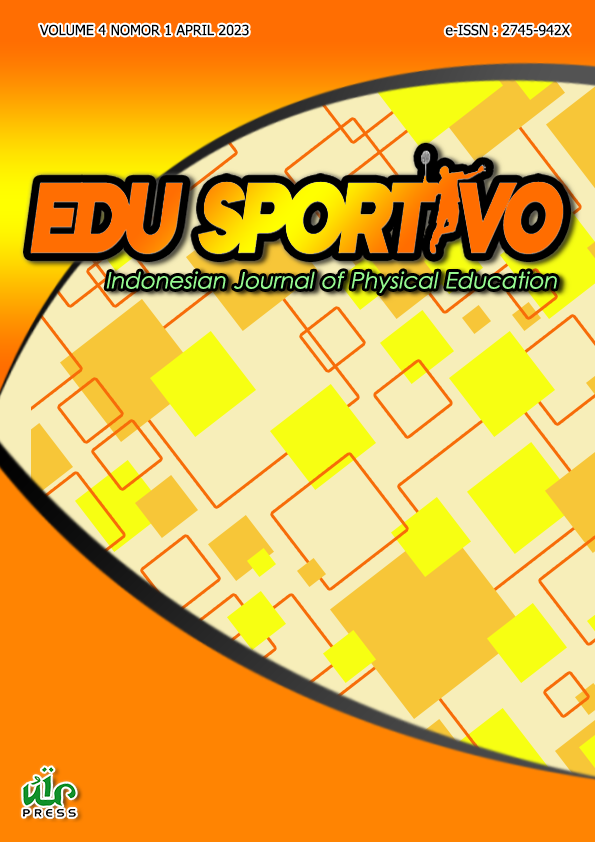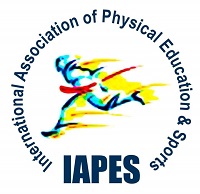Factors affecting occupational distress and its relationship to teaching satisfaction of physical education teachers
Keywords:
Occupational distress, teaching satisfaction, physical education teachersAbstract
The COVID-19 pandemic has wrought substantial challenges on individuals and societies, including the academe. The pandemic required a sudden shift to remote learning. Teachers were called upon to support students' academic development and well-being throughout this shift while navigating adversity and stress in their own lives. The researchers aim to describe the factors affecting the relationship between Occupational Distress (OD) and Teaching Satisfaction (TS) among Physical Education teachers handling Junior and Senior High Schools in Angeles City with 150 respondents through a self-administered survey. Purposive or Convenience sampling was utilized to recruit respondents, while descriptive and inferential statistics were used to analyze the data. The researchers found that most respondents are women between 22 to 29 years old, female, and single. In terms of history, the majority of the respondents are ranked as Teacher I, working in public school, with a salary of 20,001-30,000 range; most of them have their bachelor's degree, handling junior high school students, and working for one (1) - three (3) years. The result shows that respondents' OD level is low while their level of TS is moderate. The study results show a significant moderate correlation between Teacher's Occupational Distress and Teacher's Teaching Satisfaction. Specifically, in terms of each variable, age and type of school substantially affect the Teachers' Occupational Distress. On the other hand, no variable significantly affects the Teachers' Teaching Satisfaction in terms of the demographic profile and teaching history.
Downloads
References
Agai-Demjaha, T., Bislimovska, J. K., & Mijakoski, D. (2015). Level of Work Related Stress among Teachers in Elementary Schools. Open Access Macedonian Journal of Medical Sciences, 3(3), 484–488. https://doi.org/10.3889/oamjms.2015.076
Ancheta, R., & Ancheta, H. (2020). The New Normal in Education: A Challenge to the Private Basic Education Institutions in the Philippines? International Journal of Educational Management and Development Studies, 1(1), 1–19. https://doi.org/10.53378/345960
Aydin, B., & Kaya, A. (2016). Sources of Stress for Teachers Working in Private Elementary Schools and Methods of Coping with Stress. Universal Journal of Educational Research, 4(12A), 186–195. https://doi.org/10.13189/ujer.2016.041324
Baluyos, G. R., Rivera, H. L., & Baluyos, E. L. (2019). Teachers’ Job Satisfaction and Work Performance. Open Journal of Social Sciences, 07(08), 206–221. https://doi.org/10.4236/jss.2019.78015
Bharati, J. (2017). Stress of Teachers Working At Primary School. International Education and Research Journal, 3(1), 71–74.
Bottiani, J. H., Duran, C. A. K., Pas, E. T., & Bradshaw, C. P. (2019). Teacher stress and burnout in urban middle schools: Associations with job demands, resources, and effective classroom practices. Journal of School Psychology, 77, 36–51. https://doi.org/10.1016/j.jsp.2019.10.002
Daumiller, M., Rinas, R., Hein, J., Janke, S., Dickhäuser, O., & Dresel, M. (2021). Shifting from face-to-face to online teaching during COVID-19: The role of university faculty achievement goals for attitudes towards this sudden change, and their relevance for burnout/engagement and student evaluations of teaching quality. Computers in Human Behavior, 118, 106677. https://doi.org/10.1016/j.chb.2020.106677
De Simone, S., Cicotto, G., & Lampis, J. (2016). Occupational stress, job satisfaction and physical health in teachers. European Review of Applied Psychology, 66(2), 65–77. https://doi.org/10.1016/j.erap.2016.03.002
Desouky, D., & Allam, H. (2017). Occupational stress, anxiety and depression among Egyptian teachers. Journal of Epidemiology and Global Health, 7(3), 191. https://doi.org/10.1016/j.jegh.2017.06.002
Fauzi, I., & Sastra Khusuma, I. H. (2020). Teachers’ Elementary School in Online Learning of COVID-19 Pandemic Conditions. Jurnal Iqra’: Kajian Ilmu Pendidikan, 5(1), 58–70. https://doi.org/10.25217/ji.v5i1.914
Fortes, M. A., Tian, L., & Huebner, E. S. (2020). Occupational Stress and Employees Complete Mental Health: A Cross-Cultural Empirical Study. International Journal of Environmental Research and Public Health, 17(10), 3629. https://doi.org/10.3390/ijerph17103629
Granger, A., Woolfolk, F., & Griffin-brown, J. (2022). Teacher Salary and How It Relates to Job Satisfaction. 11(4), 8–14.
Hackman, J. R., & Oldham, G. R. (1974). The Job Diagnostic Survey: An Instrument for the Diagnosis of Jobs and the Evaluation of Job Redesign Projects. Report No. 4, Yale University, Department of Administration Science, New Haven, CT., 1.
Hung, C.-L. (2012). Job stress and coping strategies among early childhood teachers in Central Taiwan. Educational Research and Reviews, 7(23), 494–501. https://doi.org/10.5897/ERR12.021
Kaupa, S. (2020). The Sources and Impact of Stress of Teachers on the Performance of Learners: the View Point of the High School Teachers in Khomas Region in Namibia. Journal of International Business Research and Marketing, 5(4), 12–16. https://doi.org/10.18775/jibrm.1849-8558.2015.54.3002
Kaur, M., & Kumar, R. (2019). Determinants of occupational stress among urban Indian school teachers. Research in Education, 105(1), 3–17. https://doi.org/10.1177/0034523717745341
Kaur, S. (2017). Occupational Stress in Teaching : a Comparative Study of College Teachers in Punjab. International Education & Research Journal, 3(5), 331–333.
Kavita, K., & Hassan, N. C. (2018). Work Stress among Teachers: A Comparison between Primary and Secondary School Teachers. International Journal of Academic Research in Progressive Education and Development, 7(4), 60–66. https://doi.org/10.6007/IJARPED/v7-i4/4802
Kidger, J., Brockman, R., Tilling, K., Campbell, R., Ford, T., Araya, R., King, M., & Gunnell, D. (2016). Teachers’ wellbeing and depressive symptoms, and associated risk factors: A large cross sectional study in English secondary schools. Journal of Affective Disorders, 192(January), 76–82. https://doi.org/10.1016/j.jad.2015.11.054
Kourmousi, N., & Alexopoulos, E. C. (2016). Stress Sources and Manifestations in a Nationwide Sample of Pre-Primary, Primary, and Secondary Educators in Greece. Frontiers in Public Health, 4(April), 1–9. https://doi.org/10.3389/fpubh.2016.00073
Kumar, D. (2016). Impact of Compensation Factors on Teachers’ Job Satisfaction: An Econometric Focus. Global Disclosure of Economics and Business, 5(2), 67–76. https://doi.org/10.18034/gdeb.v5i2.130
Lee, B.-J., & Lee, M. J. (2006). Quantile Regression Analysis of Wage Determinants in the Korean Labor Market. The Journal of the Korean Economy, 7(1), 1–31.
Lobo, J. (2022). A sudden shift: Students’ perception of distance and online education in physical education amidst COVID-19 Pandemic. Edu Sportivo: Indonesian Journal of Physical Education, 3(3), 200–216. https://doi.org/10.25299/es:ijope.2021.vol3(3).9276
Lobo, J., Dimalanta, G., Bautista, C., Buan, E., & De Dios, D. Al. (2022). TikTok Consumption and Level of Class Engagement of Performing Arts Students in the New Normal: Destructive or Beneficial? American Journal of Education and Technology, 1(1), 1–9. https://doi.org/10.54536/ajet.v1i1.305
MacIntyre, P. D., Gregersen, T., & Mercer, S. (2020). Language teachers’ coping strategies during the Covid-19 conversion to online teaching: Correlations with stress, wellbeing and negative emotions. System, 94, 102352. https://doi.org/10.1016/j.system.2020.102352
Malik, N. A. A., Björkqvist, K., & Österman, K. (2017). Factors Associated with Occupational Stress among University Teachers in Pakistan and Finland. Journal of Educational, Health and Community Psychology, 6(2), 1. https://doi.org/10.12928/jehcp.v6i2.7047
McCarthy, C. J. (2019). Teacher stress: Balancing demands and resources. Phi Delta Kappan, 101(3), 8–14. https://doi.org/10.1177/0031721719885909
Melaku, S. M., & Hundii, T. S. (2020). Factors Affecting Teachers Job Satisfaction in Case of Wachemo University. International Journal of Psychological Studies, 12(3), 28. https://doi.org/10.5539/ijps.v12n3p28
Msuya, O. W. (2016). Exploring Levels of Job Satisfaction Among Teachers in Public Secondary Schools in Tanzania. International Journal of Educational Administration and Policy Studies, 8(2), 9–16. https://doi.org/5897/IJEAPS2015.0435
Ndijuye, L. G., & Tandika, P. B. (2019). Timely promotion as a motivation factor for job performance among pre-primary school teachers: Observations from Tanzania. Erken Çocukluk Çalışmaları Dergisi, 3(2), 440–456. https://doi.org/10.24130/eccd-jecs.1967201932129
Sadeghi, K., & Sa’adatpourvahid, M. (2016). EFL teachers’ stress and job satisfaction: What contribution can teacher education make? Iranian Journal of Language Teaching Research, 4(3), 75–96.
Sansó, N., Vidal-Blanco, G., & Galiana, L. (2021). Development and Validation of the Brief Nursing Stress Scale (BNSS) in a Sample of End-of-Life Care Nurses. Nursing Reports, 11(2), 311–319. https://doi.org/10.3390/nursrep11020030
Shafi, M. (2016). Job Satisfaction in College Teachers: A Survey Based Study of Government Colleges of Hyderabad, Pakistan. Journal of Hotel & Business Management, 5(1), 1–5. https://doi.org/10.4172/2169-0286.1000126
Shkëmbi, F., Melonashi, E., & Fanaj, N. (2015). Workplace Stress Among Teachers in Kosovo. SAGE Open, 5(4), 215824401561461. https://doi.org/10.1177/2158244015614610
Toropova, A., Myrberg, E., & Johansson, S. (2021). Teacher job satisfaction: the importance of school working conditions and teacher characteristics. Educational Review, 73(1), 71–97. https://doi.org/10.1080/00131911.2019.1705247
Ul Haque, A., Nair, S. L. S., & Kucukaltan, B. (2019). Management and Administrative Insight for the Universities: High Stress, Low Satisfaction and No Commitment. Polish Journal of Management Studies, 20(2), 236–255. https://doi.org/10.17512/pjms.2019.20.2.20
You, S., Kim, A. Y., & Lim, S. A. (2017). Job satisfaction among secondary teachers in Korea. Educational Management Administration & Leadership, 45(2), 284–297. https://doi.org/10.1177/1741143215587311
Published
How to Cite
Issue
Section
This is an open-access article distributed under the terms of the Creative Commons Attribution-ShareAlike 4.0 International License which permits unrestricted use, distribution, and reproduction in any medium. Users are allowed to read, download, copy, distribute, search, or link to full-text articles in this journal without asking by giving appropriate credit, provide a link to the license, and indicate if changes were made. All of the remix, transform, or build upon the material must distribute the contributions under the same license as the original.
Accepted 2022-11-21
Published 2022-12-19



.png)




















.png)







.png)





